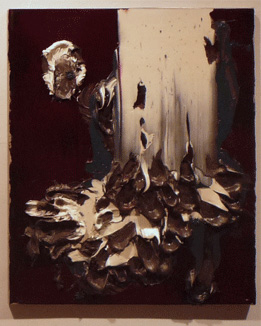A good example of the erased-in-Photoshop genre. That was what the Whitney forgot in the specimens it put in the 2001 "Bitstreams" show: wit. (Instead we got "whit.") (Why keep harping on that show? Even though it was 8 years ago it was kind of the arrival and death of computer art in the museum.)
The linked example comes from lalblog.tumblr, but there doesn't appear to be an author of this thing, just lots of links to other tumblr sites. Again, much preferable to having a computer genius touted as the only person doing the gimmick.

